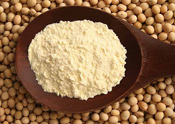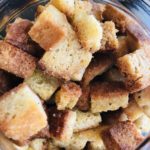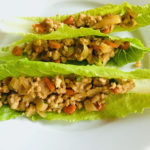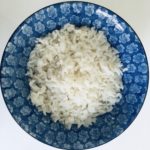 It is common knowledge now in the gluten-free community that most oats are contaminated with wheat. For this reason, certified gluten-free oats have become available and are increasingly being used in cereals, bars and cookies. I have wondered about other grains — why would oats be the only ones when surely other grains are grown near, processed, stored, and transported with wheat? Though I wondered about it, I didn’t pursue it, probably because I never really wanted to know the answer!
It is common knowledge now in the gluten-free community that most oats are contaminated with wheat. For this reason, certified gluten-free oats have become available and are increasingly being used in cereals, bars and cookies. I have wondered about other grains — why would oats be the only ones when surely other grains are grown near, processed, stored, and transported with wheat? Though I wondered about it, I didn’t pursue it, probably because I never really wanted to know the answer!
The answer is here, and it’s not good news. In a study conducted by registered dietitian Tricia Thompson, Anne Lee of Schar, and Thomas Grace of Bia Diagnostics, 7 of 22 (32%) samples of naturally gluten-free grains, seeds and flours tested contained mean gluten levels above 20 ppm with amounts ranging from 25 to 2,925 ppm. What does this mean? Some foods we think of as being naturally gluten-free actually contain higher than the proposed FDA amount of allowable gluten (20 parts per million or ppm).
This poses a problem for the FDA’s proposal regarding gluten-free claims on food. Under the proposed FDA rule, gluten-free oats can have a gluten-free claim on them because some oats are contaminated with wheat and are not gluten-free. An “inherently gluten-free” food, on the other hand, such as apples, would not be allowed to have a gluten-free claim on them unless it was stated that “all apples are gluten-free” or something to that effect. Apples are obviously gluten-free so putting a gluten-free claim is considered misbranding of those particular apples. But what about these other grains?
Gluten-free grains, seeds and flours that many of us eat every day were found to be contaminated with wheat. The most contaminated samples in this study were soy flour, millet flour and sorghum flour. Thompson notes on her blog entry about the study that “sampling was not large enough to make any assessment on the overall percentage of contaminated product. Sampling also was not large enough to make any inferences on the specific grains, flours, and seeds more or less likely to be contaminated.”
This study might open a can of worms for the FDA, which must decide what a gluten-free label claim means. It also opens a can of worms for the gluten-free community… what are we to do now? Trace every grain, seed and flour, including those used as ingredients in gluten-free products, back to its origin to ensure that it has not been contaminated with wheat? Let’s hope that testing continues and that more information becomes available regarding this issue.
Read more about the study:
Abstract from the Journal of the American Dietetic Association
Contamination of Naturally Gluten-Free Grains







Amy says
One way to reduce the chances for inadvertent gluten consumption is to avoid grains as much as possible. I suspect that grains are the most likely source of gluten contamination, from the field to the processing plant. There’s no biological requirement for grains, and historically, humans did not eat grains except perhaps when we might have otherwise starved. I follow a Paleolithic/Primal diet for the most part and this has worked wonders for my health and has helped me avoid getting “glutened.”
Lisa says
Michael Pollan’s book offers advice similar to Amy’s, above. Eat real food, not too much, mostly plants (which he clarifies to mean leafy vegetables). It’s a naturally gluten free diet and avoids potential contaminated grains.
Susanne says
The findings of that study explain why I still have mild symptoms when I eat my own home-made bread (based on a recipe from Annalise G. Robert’s book Gluten-Free Baking Classics for the Bread Machine). The major component of the flour mix that I have been using is Millet flour, Sorghum flour is added a lesser proportion along with some starches.
How can I as a consumer become active in pushing for true gluten-free flours on the market (since I am not willing to entirely give up breads)??
alison says
Yes, there are a lot of people who feel better completely grain-free. I am not there yet… but don’t feel that I have symptoms to warrant being grain-free. If I did, it is definitely something I would try.
Jennifer says
Yes, that is probably one of the big reasons why the Specific Carbohydrate Diet (SCD) worked so well to heal my gut when eating strictly gluten-free (I thought) did not. The only grain substitute allowed on that diet is almond flour which I purchased online from a guaranteed gluten-free source.